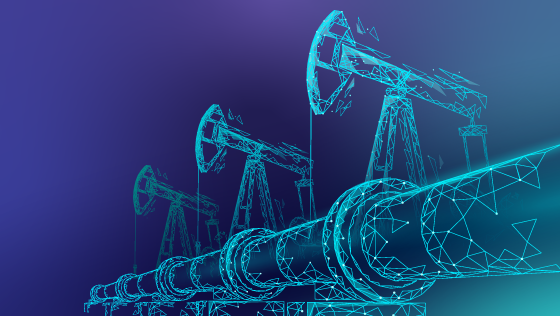Quantum computing in the oil and gas industry can offer critical solutions to the complex computations demanded as part of the supply chain of the future.
As evidence, at the recent KPMG Global Energy Conference in Houston, oil and gas executives named quantum computer technology as the next big breakthrough for the oil and gas sector.
Quantum computing offers the opportunity to impact oil and gas across so many different arenas. These include everything from a driverless supply chain to more efficient and interconnected organizations across up-mid and downstream organizations.
Quantum computers can optimize the sourcing, extraction, processing, logistics, and other services. It can also accelerate and improve the replanning response to risks and interruptions. Quantum optimization can drive the seamless integration of supply chains, replacing today’s siloes where each activity is being planned independently.
The optimization and level of efficiency in virtually all energy sector operations have a direct impact on the profitability of a program.
Examples of optimization value include:
- Enhance solutions for routing product from extraction through processing, transportation and storage to the consumer in the most cost efficient method
- Provide insights and solutions to the personnel scheduling challenges that exist when operating multi-shift, large scale pumping or refining
- Perform gathering system and water management calculations that can provide best choice solutions that will save valuable budget space.
- Identifying the optimum locations for temporary and permanent facilities that will provide optimum profit potential
There are a number of areas that can benefit from quantum optimization and quantum computing overall. Let’s examine them across the petroleum supply chain.
Optimizing Oil and Gas Upstream, Downstream, and Mid-stream
Supply chain management in the oil and gas industry includes configuration, coordination and continuous improvement of sequential operations across the upstream, midstream, and downstream.
Upstream Optimization Opportunities
Raw material extraction and/or production comprise the elements of an oil and gas upstream supply chain. Upstream organizations, often referred to as exploration and production, identify oil and natural gas deposits and engage in the extraction of these resources from underground.
Activities in upstream that are targets for optimization with quantum:
- Survey and exploration, including aerial, seismic, geophysical, and geological
- Test or appraisal drilling, including wildcat and test wells.
- Long and near-term development planning.
- Workover scheduling to increase production at the least cost.
- Planning decommission of uneconomic wells.
- Workforce and haul scheduling for efficient and safe exception based pumping
The goal of upstream operations is to deliver the greatest possible return on investment with the safest and smallest operational footprint.
Seismic 3D and 4D reservoir modeling are used to produce quantities of natural resources and to provide surface drilling locations among other vital data sets. Such flow simulations demand large classical computing resources and can take hundreds of hours to complete. When certain variables are updated or changed to the data sets, the entire process has to be repeated.
Quantum offers to accelerate computations and deliver more precise insights.
A sample of the activities that could benefit from the efficiency of quantum are:
Precise point of penetration locations
- Use existing data sets and workflows to determine a more accurate position to enhance recovery
Optimized drilling program to integrate into existing infrastructure
- Factor existing gathering, transmission, and storage networks to create the most accurate positioning of facilities and infrastructure
Gathering system capacity optimization
- Produce what is needed based upon accurate and precise production data, saving crucial budget for where it is needed
Mid-stream Optimization Opportunities
Mid-stream firms are involved in the infrastructure that is used in transporting crude oil and petroleum products. The midstream includes facilities and processes that operate between the upstream and downstream organizations.
Mid-stream activities can include the processing, storing, and transporting of oil and gas. Since most oil and gas reserves are located in more remote locations, transportation is a big part of midstream activities to ensure the reserves are delivered efficiently to processing facilities.
Mid-stream infrastructure can include pipelines, trucking fleets, tanker ships, and rail cars. The core of mid-stream operations is in the storage areas or gathering systems where materials are held until they are moved downstream to refineries for processing.
Quantum computing offers the opportunity for refinery operations to more precisely staff and manage continuous production cycles, including:
Personnel scheduling
- Thousands of employees working multiple shifts require large computations and constant updating
Materials logistics and product distribution
- Demand production updating as well as natural environmental projections require optimization
- Material management accuracy can increase profitability
Facility location
- Temporary refining facilities demand precise location projections including network optimization for distribution
- The future success of a new refining facility can include thousands of variables that require large compute processing
Downstream Optimization Opportunities
Downstream refers to the processing, delivery, and sales of refined oil and gas products. The firms in this area are focused on margins for business success.
Downstream operations include refineries, sales, and marketing. Refineries process crude oil into useful products including gasoline, fuel oils, and other petroleum products. Sales and marketing services deliver the finished products.
The global network of pipelines, rail, storage and truck logistics is a complex system spanning diverse geographies and operations. Optimizing logistics requires thousands of hours of computations for initial planning, as well as for critical updates to respond to any production or weather changes.
Logistics for the oil and gas industry require vast and complicated computations. Classical systems are running out of the power needed to solve these computations in a timely manner.
Quantum computing offers the same advantages to oil and gas logistics as it does to any other complex delivery system, including minimizing costs of transportation, eliminating out of supply or significant oversupply situations and optimizing the overall profitability of all resources within and being delivered by the logistical chain.


